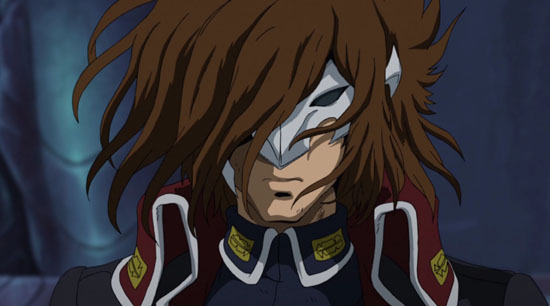
If it’s not 197x and you’re animating something created by Leiji Matsumoto (Galaxy Express 999, Captain Harlock), you have your work cut out for you. This is no fault of Matsumoto’s, but his art is just something that doesn’t tend to mesh well with modern production techniques. It turns out this holds true for the latest Matsumoto anime, Ozma, which just started streaming this past weekend.
The streaming situation is actually one of the more interesting things about Ozma. Online startup Viki recently announced the series would be streaming worldwide, and that’s no exaggeration. The show is streaming in 200 countries 24 hours after its broadcast on Japan’s WOWOW channel. If you want to check out Ozma before reading impressions, it’s available via Crunchyroll.

With anime veteran Ryousuke Takahashi (Armored Trooper Votoms, Gasaraki) serving as chief director, Ozma is based on a 30-year-old script that was never produced. The story follows Sam, voiced by Tetsuya Kakihara (Fairy Tail‘s Natsu Dragneel), a young man who is after an enormous sand whale known as Ozma. His desert search goes awry when he runs across Maya, a mysterious woman being pursued by the Theseus Army. The only thing that manages to throw a wrench in their pursuit is Ozma itself, as it suddenly bursts from the sandy sea, providing Sam and Maya a window of opportunity to flee back to base camp.
This is where much of the first episode takes place, casually introducing viewers to the various characters that take up residence on the vessel on which Sam resides. Initially floored by the appearance of the gorgeous Matsumoto stylings of Maya, they quickly take arms as her pursuing forces show up to claim what’s theirs.

Ozma is the first major anime project from Leiji Matsumoto in five years, and it fares about as well as anything else from the past couple of decades. The animation production from Gonzo and LandQ Studios is pretty bare and uninspiring. Characters move stiffly, and the whole thing has a gloss to it that really doesn’t complement Matsumoto’s art style. His wispy character designs tend to look more at home in productions from the 70s and 80s, understandably, but that might have been easier to overlook if the animation had more life to it. As it stands, Ozma has some decent looking backgrounds and that’s about it.
It’s tough to gauge whether or not the story will float after just one episode. Ozma‘s narrative success is dependent on what happens after the closing moment, which I won’t spoil here. With just five more episodes to look forward to, let’s hope it takes a more interesting turn sooner than later. If you’re curious about it, or just can’t resist anything Matsumoto, it might be worth your time, but I’m not terribly excited about seeing more of Ozma‘s dry desert world.
© 2012 “OZMA” Production Parties
© 2012 Leiji Matsumoto

